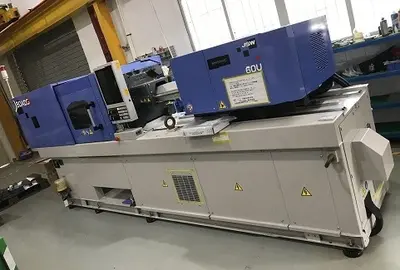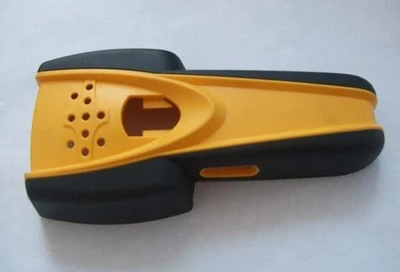

Introduction to Injection Molding
Have you ever wondered how all those plastic toys, containers, and other everyday items are made? Well, a big part of the answer lies in a process called injection molding. Injection molding is a crucial technique used in manufacturing a wide variety of plastic products that we use in our daily lives.
What is Injection Molding?
Injection molding is a process where melted plastic material is injected into a mold, which is like a hollow shape that the plastic fills up. Once the plastic cools down and hardens, it takes the shape of the mold. This method allows manufacturers to create precise and detailed plastic items efficiently and in large quantities.
Why Use Injection Molding?
Injection molding is preferred for making plastic products because it enables the production of many identical items quickly and accurately. This means that the plastic products you use, such as cups, containers, and parts of toys, are all made to be the same size and shape every time. This uniformity ensures that the products function as intended and fit together perfectly.
The Steps of Injection Molding
Injection molding is a process that involves several stages to create various plastic products with precision. Let's walk through the steps from start to finish.
Designing the Mold
The first step in injection molding is designing the mold. The mold is like a template that shapes the molten plastic into the desired form. It is crucial to create a mold that matches the exact shape and size of the product being made.
Preparing the Plastic
Next, the plastic material is prepared for injection. The plastic pellets are heated until they melt into a liquid form. This molten plastic is then injected into the mold under high pressure.
Injection and Cooling
Once the molten plastic is injected into the mold, it is left to cool and harden. The cooling process is essential to ensure that the plastic takes on the shape of the mold accurately. This step requires precision timing to achieve the right hardness.
Ejecting the Product
After the plastic has cooled and solidified, the next step is to eject the product from the mold. The mold opens up, releasing the newly molded plastic product. This step requires careful handling to avoid damaging the product.
Types of Plastics Used
When it comes to creating plastic products through injection molding, different types of plastics are used based on the specific properties required for the end product. Let's explore some common types of plastics used in the injection molding process and what makes them suitable for different applications.
Different Plastic Materials
1. ABS (Acrylonitrile Butadiene Styrene): ABS is a versatile plastic known for its strength and impact resistance. It is commonly used in manufacturing toys, electronic enclosures, and automotive parts.
2. PP (Polypropylene): PP is a lightweight and flexible plastic that is resistant to heat and chemicals. It is often used in packaging, medical devices, and household products.
3. HDPE (High-Density Polyethylene): HDPE is a strong and durable plastic with excellent chemical resistance. It is commonly found in bottles, pipes, and containers.
4. PC (Polycarbonate): PC is a transparent plastic known for its high impact strength. It is used in applications where optical clarity and impact resistance are essential, such as in eyewear and automotive components.
5. PEEK (Polyether Ether Ketone): PEEK is a high-performance engineering plastic with exceptional mechanical and thermal properties. It is often used in aerospace, medical, and industrial applications where extreme conditions are present.
Each type of plastic offers unique characteristics that make it suitable for specific products. By choosing the right plastic material for injection molding, manufacturers can ensure that the final products meet the required standards of strength, durability, and functionality.
Precision in Injection Molding
Injection molding requires a high level of precision to create plastic products that are identical and accurately shaped. Precision is vital to ensure that the final products function correctly and meet the required specifications.
Why Precision Matters
When it comes to injection molding, precision is crucial because even the smallest error can affect the quality of the final product. Imagine trying to fit a puzzle piece into a spot that's just a little too small - it wouldn't work, right? The same principle applies to injection molding. If the mold or the injection process isn't precise, the plastic products may not fit together correctly or function as intended.
How Precision is Achieved
To achieve precision in injection molding, engineers and technicians use advanced tools and techniques. One essential tool is the CNC (Computer Numerical Control) machine, which helps create molds with incredible accuracy. These machines follow precise instructions to shape the mold exactly as designed, ensuring that each product comes out perfectly.
In addition to using high-tech machinery, experts also pay close attention to every detail of the injection molding process. They carefully monitor factors like temperature, pressure, and cooling time to guarantee that each product meets the required standards. By staying focused and meticulous throughout the entire process, they can achieve the level of precision needed for top-quality plastic products.
Machines Used in Injection Molding
Injection molding is a fascinating process that allows us to create many plastic products that we use every day. But how does it all happen? Let's dive into the world of the machines used in injection molding.
Parts of an Injection Molding Machine
An injection molding machine is like a big, intricate puzzle with different parts that work together to create plastic products. One important part is the hopper, where the plastic pellets are poured in. These pellets are then heated and melted to a gooey consistency in the barrel. The melted plastic is injected into a mold, which is like a mirror image of the plastic product we want to make. Once the plastic cools and hardens, the mold opens up, and the product is ejected out.
Keeping Machines Running Smoothly
Just like how we take care of our toys to keep them working, injection molding machines also need regular maintenance to stay in tip-top shape. Technicians and operators make sure that all the parts of the machine are clean, lubricated, and working correctly. They also monitor the temperature and pressure settings to ensure that each product comes out just right. By taking good care of the machines, we can continue making all sorts of cool plastic products efficiently.
Summary of Injection Molding
Injection molding is a process that allows us to create many identical plastic products with great precision. By using molds and plastic materials, we can make various items efficiently and accurately.
Throughout the injection molding process, different steps are followed to ensure the final product meets the desired specifications. This includes designing the mold, preparing the plastic, injecting and cooling the plastic, and finally ejecting the product from the mold.
When it comes to the types of plastics used in injection molding, different materials are chosen based on the specific properties needed for the product being manufactured. Understanding the characteristics of each plastic material is crucial for producing high-quality items.
Precision is key in injection molding to guarantee that all parts and products are made with exact measurements and details. Achieving precision requires careful attention to detail and the use of specialized tools and techniques to ensure consistency in each piece produced.
The machines used in injection molding are essential for carrying out the process smoothly and efficiently. These machines consist of various parts that work together to melt the plastic, inject it into the mold, cool it down, and release the final product.
Overall, injection molding enables us to produce a wide range of plastic products that are uniform in quality and highly accurate. This method of manufacturing plays a significant role in creating everyday items we use, from toys to car parts, in a cost-effective and precise manner.






 Call us on:
Call us on:  Email Us:
Email Us:  No.23, XingYi Road, Wusha Community, Chang'an Town, Dongguan City, Guangdong Province, China.
No.23, XingYi Road, Wusha Community, Chang'an Town, Dongguan City, Guangdong Province, China.